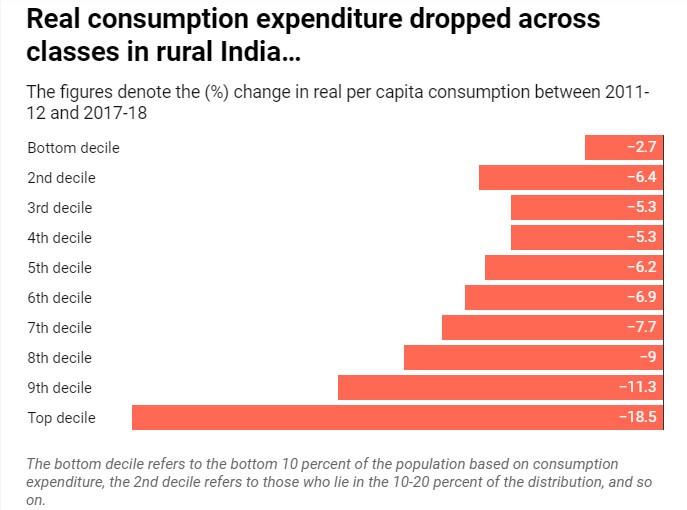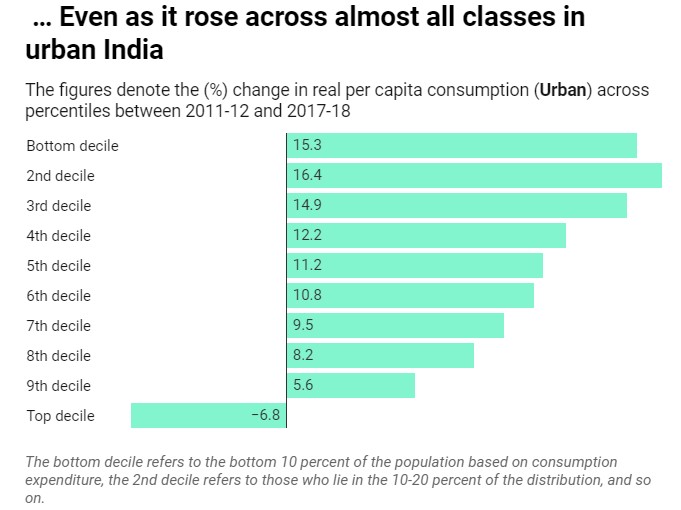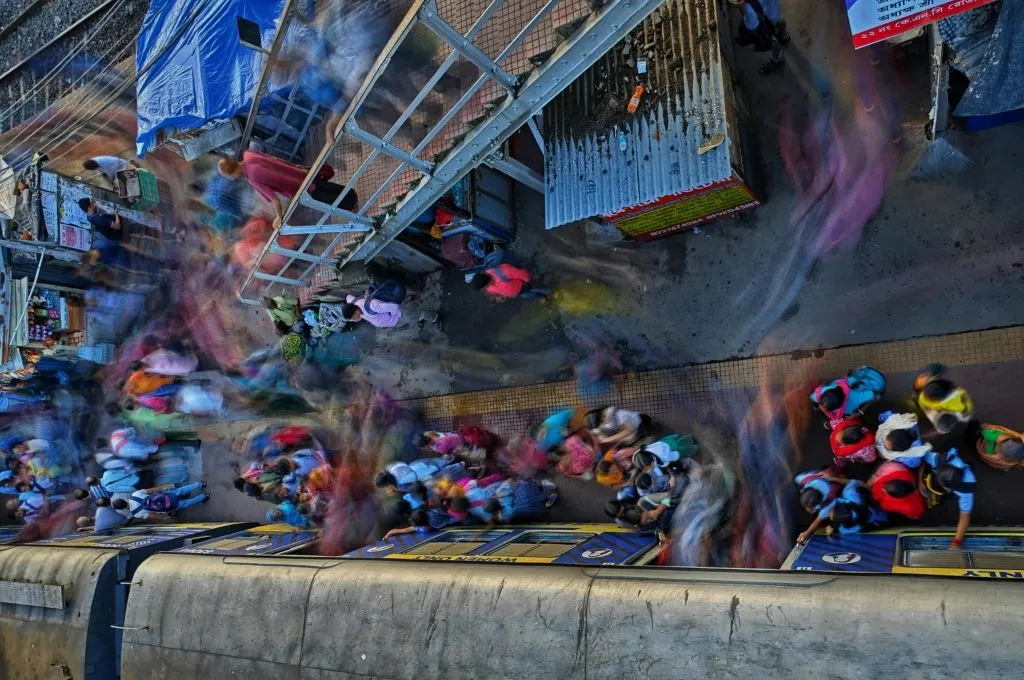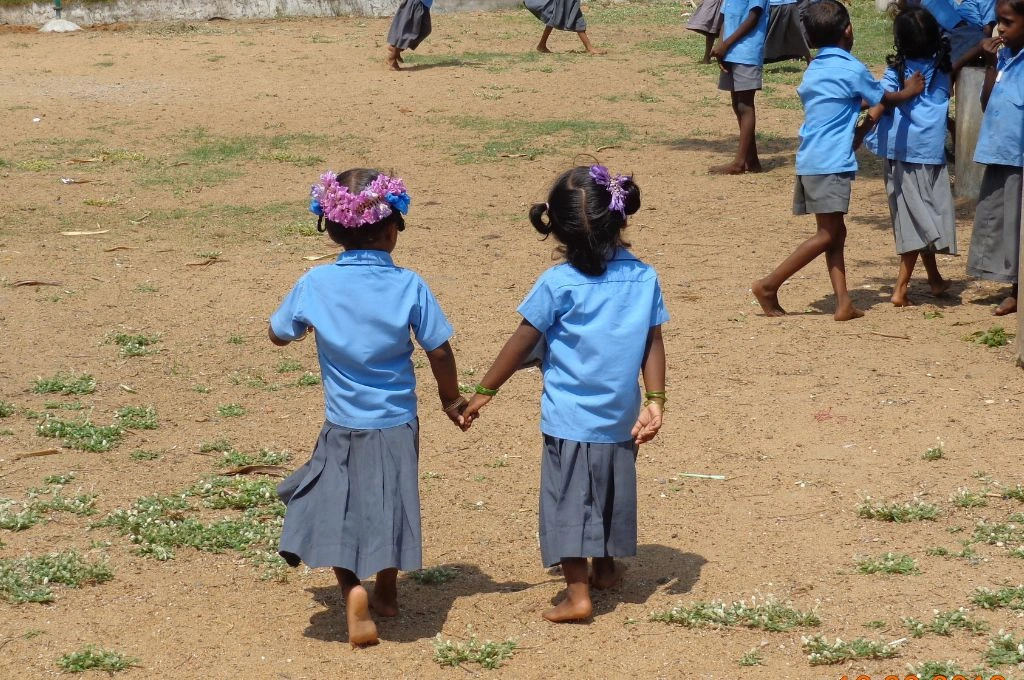Ever since India moved to a high growth trajectory in the 1980s, poverty rates have consistently declined over time. Until now.
A Mint analysis of the consumption expenditure numbers reported by the National Statistical Office (NSO) in a hushed-up report suggests that rural poverty rose nearly 4 percentage points between 2011-12 and 2017-18 to 30 percent even as urban poverty fell 5 percentage points over the same period to 9 percent. Given the higher weight of the rural population, the estimated overall poverty rate went up nearly a percentage point to 23 percent in 2017-18. The rise implies that 30 million people fell below India’s official poverty line and joined the ranks of the poor over the past six years.
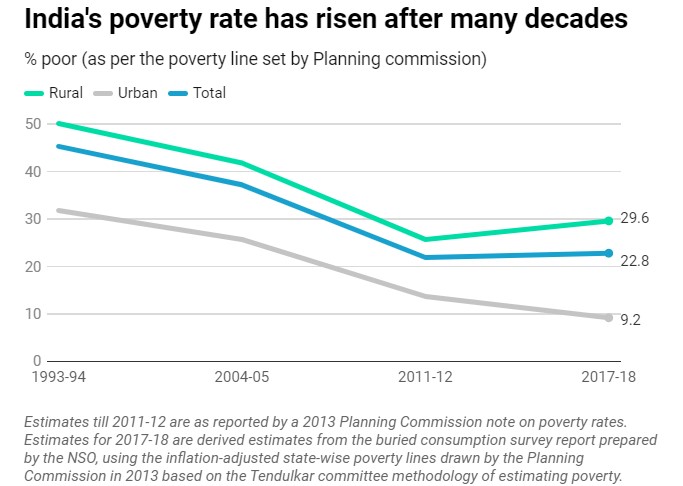
Source: Planning Commission, NSO, Mint calculations. | Created with Datawrapper
The analysis is based on a couple of simplifying assumptions (more below) and should only be treated as rough estimates of poverty in India. Yet, the broad conclusions as well as the key trends are unlikely to change regardless of the methodological tweaks used to arrive at the poverty figures.
The slight rise in overall poverty rates at the national level masks significant inter-state disparities.
The analysis shows that the slight rise in overall poverty rates at the national level masks significant inter-state disparities. Several states in the east and north-east have witnessed a sharp rise in poverty over the past few years even as southern states (barring Karnataka) managed to bring down poverty rates.
Related article: Creating the resilience to dream
Among large states, Bihar saw the greatest rise in poverty between 2011-12 and 2017-18, with poverty rate rising by a whopping 17 percentage points to 50.47 percent. Jharkhand (8.6 percentage points or ppts increase) and Odisha (8.1 ppts increase) are the other large states which saw big increases in the poverty rate. The poverty rate refers to the (percentage) share of the population that lies below the poverty line. More than 40 percent of both Jharkhand and Odisha fall below the poverty line.
West Bengal (6 ppts fall), Gujarat (5 ppts fall), and Tamil Nadu (5 ppts fall) saw the biggest declines in poverty among the large states in the period between 2011-12 and 2017-18. Among prosperous states, Maharashtra saw the biggest increase in poverty (roughly 5 ppts) over the same period.
The analysis is based on the inflation-adjusted state-wise poverty lines for rural and urban areas reported by the erstwhile Planning Commission in a 2013 note. The Planning Commission figures were based on the methodology suggested by the Tendulkar Committee on poverty in 2009, and remain the last official estimates of poverty in India. Another report by the Rangarajan Committee re-estimated poverty and submitted its report in mid-2014 but the report has neither been accepted by the government nor been used for any official allocation of funds.
The precise estimation of poverty ratios requires the raw consumption survey data. Mint has not been able to access the raw data yet. But the ‘key indicators’ report provides enough information to compute rough estimates of the poverty ratios, which this analysis has attempted. The headline numbers from the ‘key indicators’ report were first reported by Business Standard.
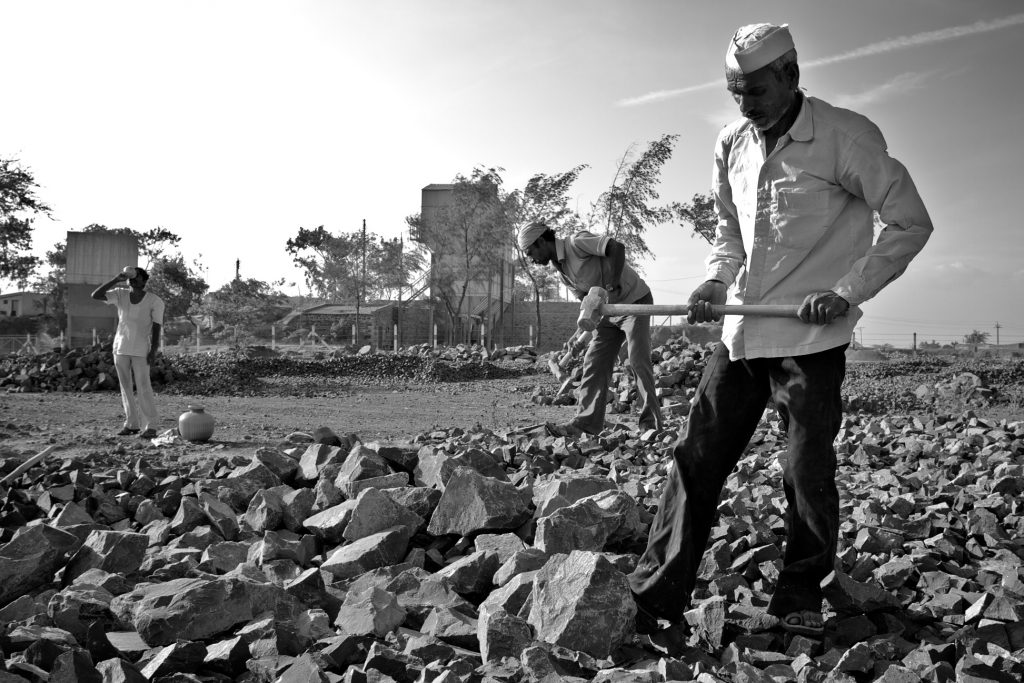
30 million people fell below India’s official poverty line and joined the ranks of the poor over the past six years. | Photo courtesy: Arjun Swaminathan
The analysis here relies on two key assumptions. Given that the ‘key indicators’ report for the 2017-18 consumption survey only reported state-wise consumption expenditures for 12 key percentiles (5th, 10th, 20th, 30th,…, 90th, 95th percentiles), a simple (linear) interpolation technique was used to derive the figures for the rest of the percentiles. The assumption here is that the distribution of consumption is smooth across the reported percentiles (say between the 10th and 20th percentiles). A percentile refers to each of the 100 equal groups into which a population can be divided according to the distribution of values of a particular variable.
The second assumption relates to the adjustment in the poverty lines based on differences in consumption figures, as reported by the mixed reference period (MRP) and modified mixed reference period (MMRP). The 2011-12 survey featured estimates based on both methods. The MMRP figures were higher across each income class for each state, and were deemed to be more accurate by official statisticians. The 2017-18 survey used only the MMRP method. But given that the Tendulkar poverty line and the Planning Commission estimates were based on the MRP figures, these poverty lines had to be scaled up to reflect the MRP-MMRP differences. This was done using a scaling-up factor based on the ratio between MRP and MMRP figures at the middle of the distribution (50th percentile) for each state, as reported in the 2011-12 report. The assumption here is that the MRP-MMRP ratio at the middle of the distribution broadly mirrors the overall distribution.
Rural poverty levels rose even as urban poverty levels declined.
Across most states, rural poverty levels rose even as urban poverty levels declined, the analysis shows. A comparison of the decile-wise consumption spend across the country in 2011-12 and 2017-18 shows that the real (inflation-adjusted) consumption expenditure fell across all decile classes in rural India even as it rose across almost all decile classes in urban India.
This suggests that regardless of the precise poverty line one adopts, rural poverty will have gone up between 2011-12 and 2017-18, and urban poverty will have gone down over the same period.
If we adopt a higher poverty line, the extent of the rise in rural poverty is likely to be higher while the extent of the decline in urban poverty is likely to be lower.
If one were to adopt a higher poverty line (such as the one recommended by Rangarajan Committee), the extent of the rise in rural poverty is likely to be higher while the extent of the decline in urban poverty is likely to be lower.
Trends in the real rural wages reported by the labour bureau tend to corroborate the rise in rural distress that the survey findings have highlighted. The labour bureau data show that real rural wages have witnessed a sharp slowdown in the years following 2011-12, after having grown sharply in the period between 2004-05 and 2011-12.
Related article: Addressing inequality in India
The government has cited an expert panel’s recommendations to justify junking the consumption survey report but that expert panel did not actually ask for the report to be buried. The discomfiting findings of the survey report may be the real reason behind the decision to hurriedly bury the report and discredit the survey, some experts have argued.
The government’s decision has prevented an evidence-based discussion of the problems and challenges facing rural India. Unlike the official growth figures, which fail to capture a large part of rural and informal economic activity, surveys conducted by NSO capture rich details of such activities.
Given the centrality of the consumption figures in the estimation of poverty, the government’s decision also has serious implications for state finances and welfare. If allocation of centrally sponsored schemes and Finance Commission grants continue to be based on outdated poverty rates (of 2011-12), states that have witnessed spikes in poverty rates will end up getting less than they need. And these are precisely the states that need help most.
Given that these issues involve enormous public funds, the raw data collected by the surveyors should be opened up to the public. A large number of independent researchers can then go through the numbers and assess scientifically which of the survey findings we should pay heed to, and which we could ignore.
This article was originally published on Livemint.



